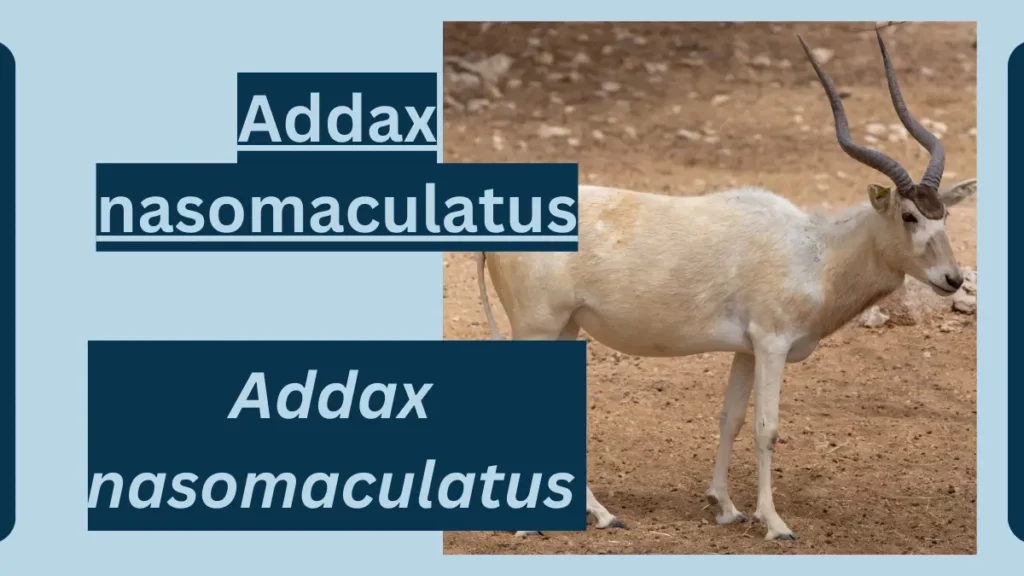Addax Animal Facts
October 13, 2023
The addax (Addax nasomaculatus) is a large antelope native to the Sahara Desert. It is the only member of the genus Addax and is the most desert-adapted antelope in Africa.

Addax
Here are some facts about Addax :
| Topic | Information |
| Scientific Classification | – Kingdom: Animalia |
| – Phylum: Chordata | |
| – Class: Mammalia | |
| – Order: Artiodactyla | |
| – Family: Bovidae | |
| – Genus: Addax | |
| – Species: Addax nasomaculatus | |
| Origins and Evolution | Addax, or White Antelopes, are native to North Africa and the Saharan Desert. They are adapted to arid, desert environments. |
| Characteristics | Mammal’s Anatomy and Appearance: Addax are medium-sized antelopes with a light-colored coat, adapted for desert life. They have long, spiral horns and distinctive facial markings. |
| Size: They typically stand around 2.5 to 3.5 feet (76 to 107 centimeters) tall at the shoulder and weigh between 220 to 300 pounds (100 to 136 kilograms). | |
| Distribution and Habitat | Addax are found in the arid regions of North Africa, particularly the Sahara Desert and the Sahel. They are adapted to desert and semi-desert habitats. |
| Behavior and Lifestyle | These antelopes are well-adapted to desert life and can go for long periods without water. They are primarily solitary and nomadic, searching for sparse vegetation. |
| Reproduction and Life Cycles | Addax reproduce sexually, and females give birth to a single calf after a gestation period of about 9 months. Calves are born in the cooler, wetter season. |
| Diet and Prey | They are herbivores, mainly feeding on grasses, leaves, and desert plants. They are well-adapted to obtaining moisture from their food and can survive on minimal water. |
| Predators and Threats | Natural predators of Addax include large carnivores like lions and cheetahs. However, their main threats are habitat loss and hunting by humans, both for their meat and as trophies. |
| Interesting Facts and Features | – Conservation Status: Addax are critically endangered, with their population dwindling due to habitat destruction and overhunting. Conservation efforts are underway to protect them. |
| – Water Conservation: They have specialized physiological adaptations to conserve water, such as concentrating urine and reducing sweat. | |
| Relationship with Humans | Addax have historical significance in the cultures of North Africa and are sometimes hunted for their meat and hides. Conservation programs aim to protect their dwindling populations. |
| Conservation Status and Life Today | The Addax is critically endangered, with populations declining due to habitat loss and illegal hunting. Conservation organizations are working to safeguard their future through captive breeding and habitat preservation. |
Also Read:
File Under:







Leave a Reply